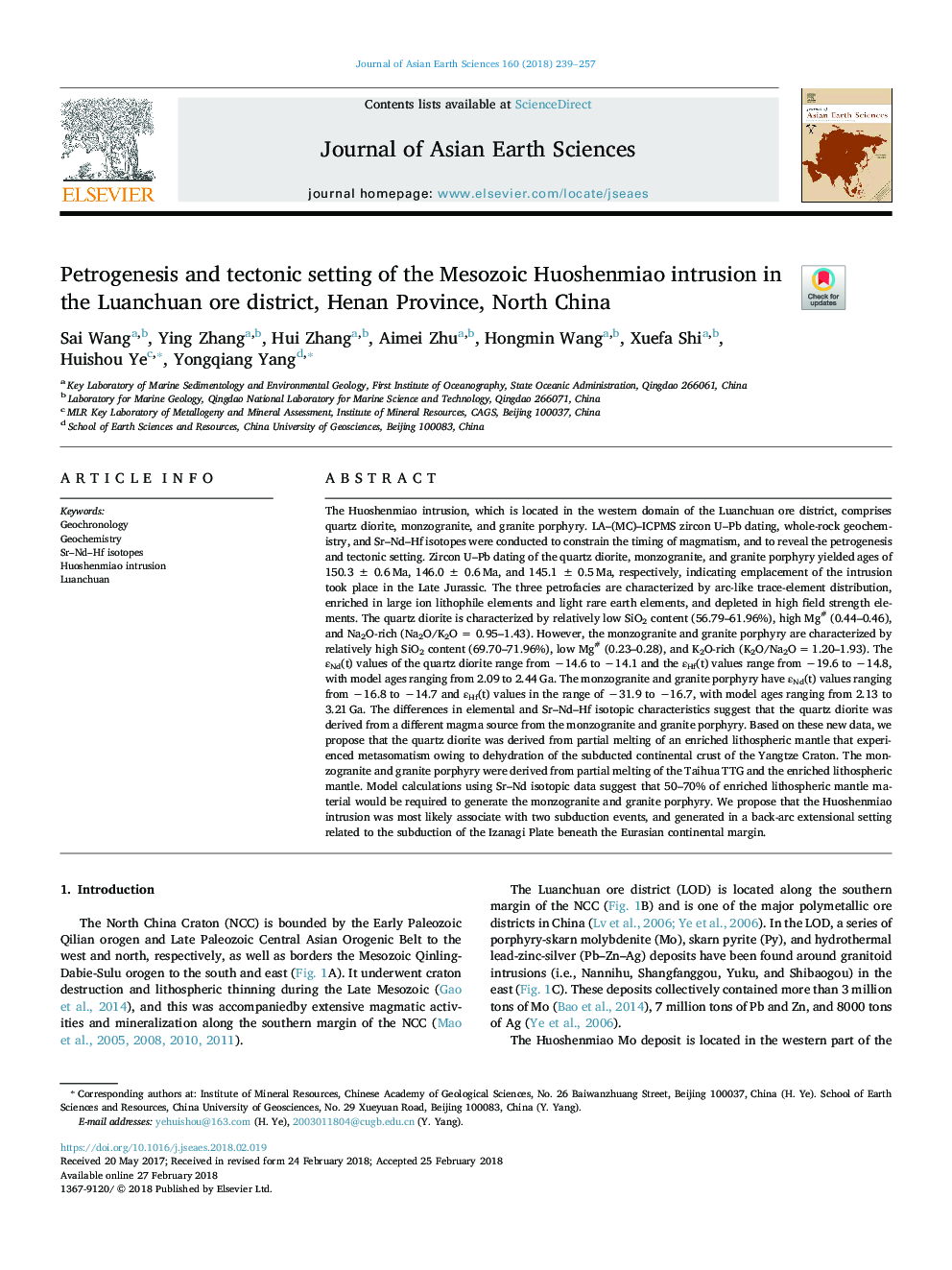| Article ID | Journal | Published Year | Pages | File Type |
|---|---|---|---|---|
| 8913925 | Journal of Asian Earth Sciences | 2018 | 19 Pages |
Abstract
The Huoshenmiao intrusion, which is located in the western domain of the Luanchuan ore district, comprises quartz diorite, monzogranite, and granite porphyry. LA-(MC)-ICPMS zircon U-Pb dating, whole-rock geochemistry, and Sr-Nd-Hf isotopes were conducted to constrain the timing of magmatism, and to reveal the petrogenesis and tectonic setting. Zircon U-Pb dating of the quartz diorite, monzogranite, and granite porphyry yielded ages of 150.3â¯Â±â¯0.6â¯Ma, 146.0â¯Â±â¯0.6â¯Ma, and 145.1â¯Â±â¯0.5â¯Ma, respectively, indicating emplacement of the intrusion took place in the Late Jurassic. The three petrofacies are characterized by arc-like trace-element distribution, enriched in large ion lithophile elements and light rare earth elements, and depleted in high field strength elements. The quartz diorite is characterized by relatively low SiO2 content (56.79-61.96%), high Mg# (0.44-0.46), and Na2O-rich (Na2O/K2O = 0.95-1.43). However, the monzogranite and granite porphyry are characterized by relatively high SiO2 content (69.70-71.96%), low Mg# (0.23-0.28), and K2O-rich (K2O/Na2Oâ¯=â¯1.20-1.93). The εNd(t) values of the quartz diorite range from â14.6 to â14.1 and the εHf(t) values range from â19.6 to â14.8, with model ages ranging from 2.09 to 2.44â¯Ga. The monzogranite and granite porphyry have εNd(t) values ranging from â16.8 to â14.7 and εHf(t) values in the range of â31.9 to â16.7, with model ages ranging from 2.13 to 3.21â¯Ga. The differences in elemental and Sr-Nd-Hf isotopic characteristics suggest that the quartz diorite was derived from a different magma source from the monzogranite and granite porphyry. Based on these new data, we propose that the quartz diorite was derived from partial melting of an enriched lithospheric mantle that experienced metasomatism owing to dehydration of the subducted continental crust of the Yangtze Craton. The monzogranite and granite porphyry were derived from partial melting of the Taihua TTG and the enriched lithospheric mantle. Model calculations using Sr-Nd isotopic data suggest that 50-70% of enriched lithospheric mantle material would be required to generate the monzogranite and granite porphyry. We propose that the Huoshenmiao intrusion was most likely associate with two subduction events, and generated in a back-arc extensional setting related to the subduction of the Izanagi Plate beneath the Eurasian continental margin.
Related Topics
Physical Sciences and Engineering
Earth and Planetary Sciences
Geology
Authors
Sai Wang, Ying Zhang, Hui Zhang, Aimei Zhu, Hongmin Wang, Xuefa Shi, Huishou Ye, Yongqiang Yang,
